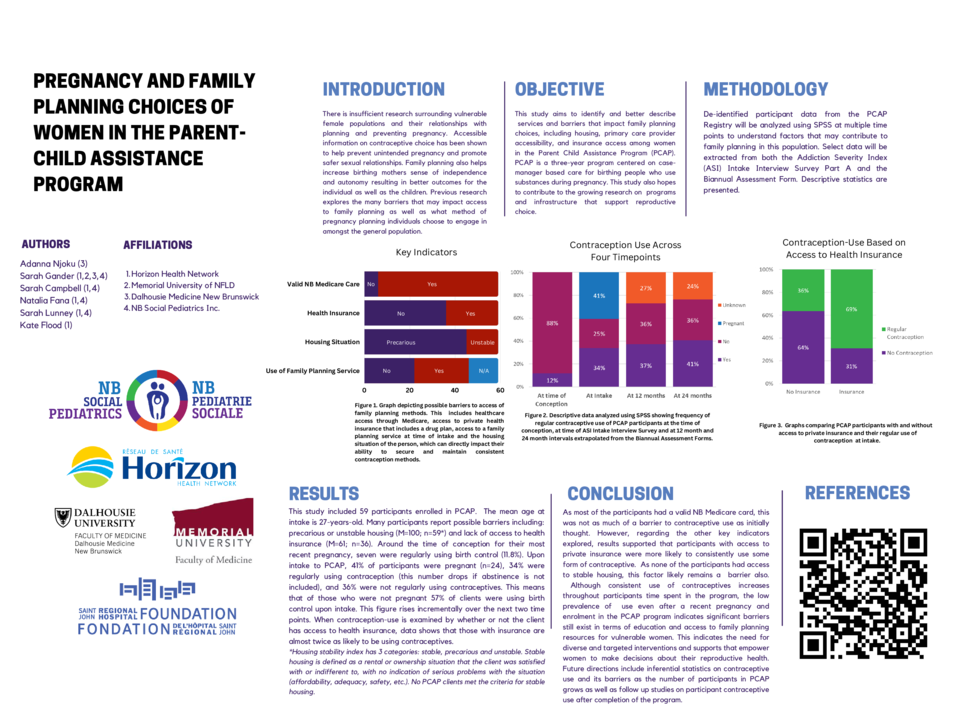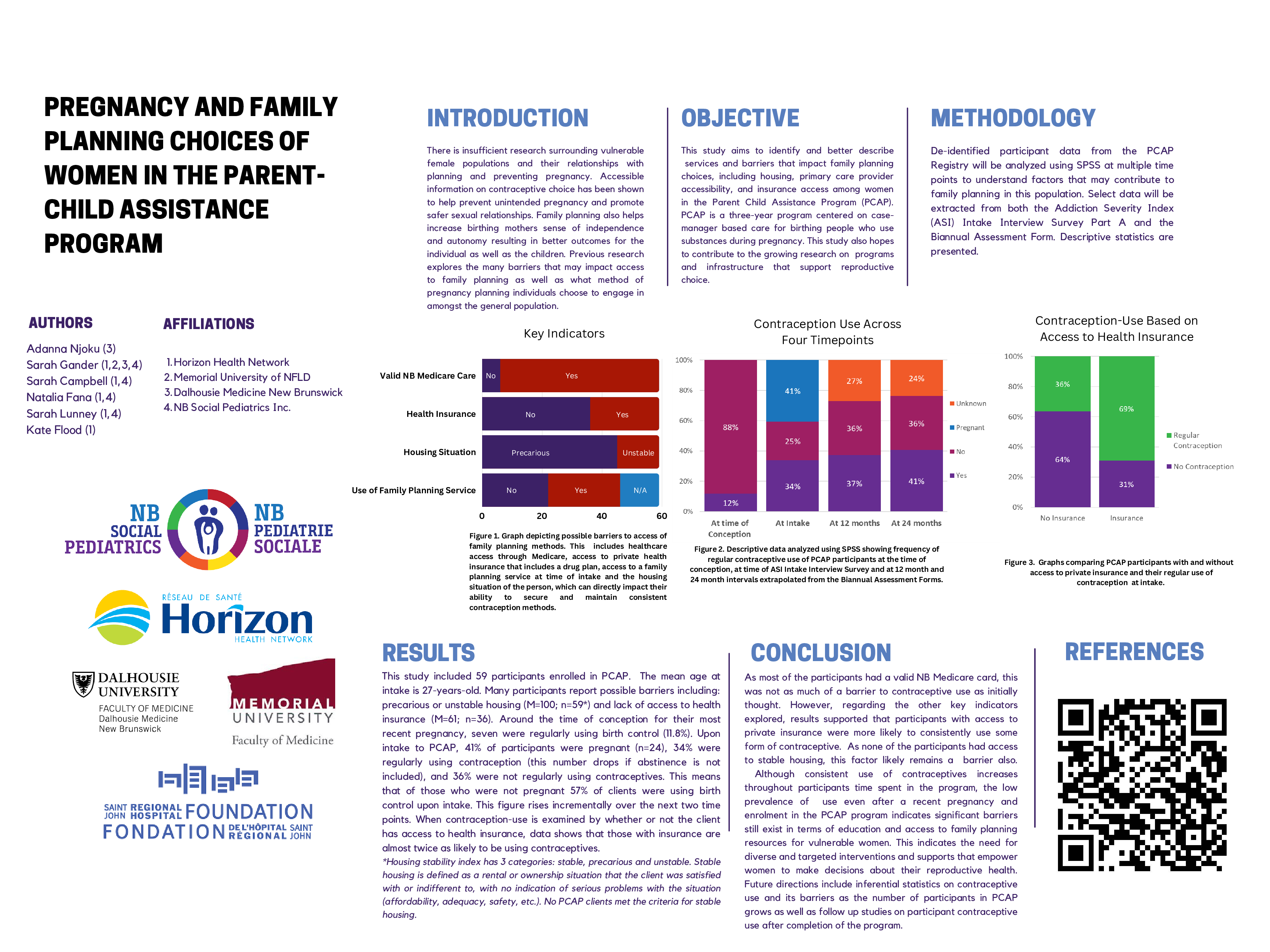Abstract
Introduction
There is insufficient research surrounding vulnerable female populations and their relationships with planning and preventing pregnancy. Accessible information on contraceptive choice has been shown to help prevent unintended pregnancy and promote safer sexual relationships. Family planning also helps increase birthing mothers sense of independence and autonomy resulting in better outcomes for the individual as well as the children. Previous research explores the many barriers that may impact access to family planning as well as what method of pregnancy planning individuals choose to engage in amongst the general population.
Objective
This study aims to identify and better describe services and barriers that impact family planning choices, including housing, primary care provider accessibility, and insurance access among women in the Parent Child Assistance Program (PCAP). PCAP is a three-year program centered on casemanager based care for birthing people who use substances during pregnancy. This study also hopes to contribute to the growing research on programs and infrastructure that support reproductive choice.
Methodology
De-identified participant data from the PCAP Registry will be analyzed using SPSS at multiple time points to understand factors that may contribute to family planning in this population. Select data will be extracted from both the Addiction Severity Index (ASI) Intake Interview Survey Part A and the Biannual Assessment Form. Descriptive statistics are presented.
Results
This study included 59 participants enrolled in PCAP. The mean age at intake is 27-years-old. Many participants report possible barriers including: precarious or unstable housing (M=100; n=59*) and lack of access to health insurance (M=61; n=36). Around the time of conception for their most recent pregnancy, seven were regularly using birth control (11.8%). Upon intake to PCAP, 41% of participants were pregnant (n=24), 34% were regularly using contraception (this number drops if abstinence is not included), and 36% were not regularly using contraceptives. This means that of those who were not pregnant 57% of clients were using birth control upon intake. This figure rises incrementally over the next two time points. The data also shows that those with health insurance are almost twice as likely to be using contraceptives.
Conclusion
As most of the participants had a valid NB Medicare card, this was not as much of a barrier to contraceptive use as initially thought. However, regarding the other key indicators explored, results supported that participants with access to private insurance were more likely to consistently use some form of contraceptive. As none of the participants had access to stable housing, this factor likely remains a barrier also. Although consistent use of contraceptives increases throughout participants time spent in the program, the low prevalence of use even after a recent pregnancy and enrolment in the PCAP program indicates significant barriers still exist in terms of education and access to family planning resources for vulnerable women. This indicates the need for diverse and targeted interventions and supports that empower women to make decisions about their reproductive health. Future directions include inferential statistics on contraceptive use and its barriers as the number of participants in PCAP grows as well as follow up studies on participant contraceptive use after completion of the program.






